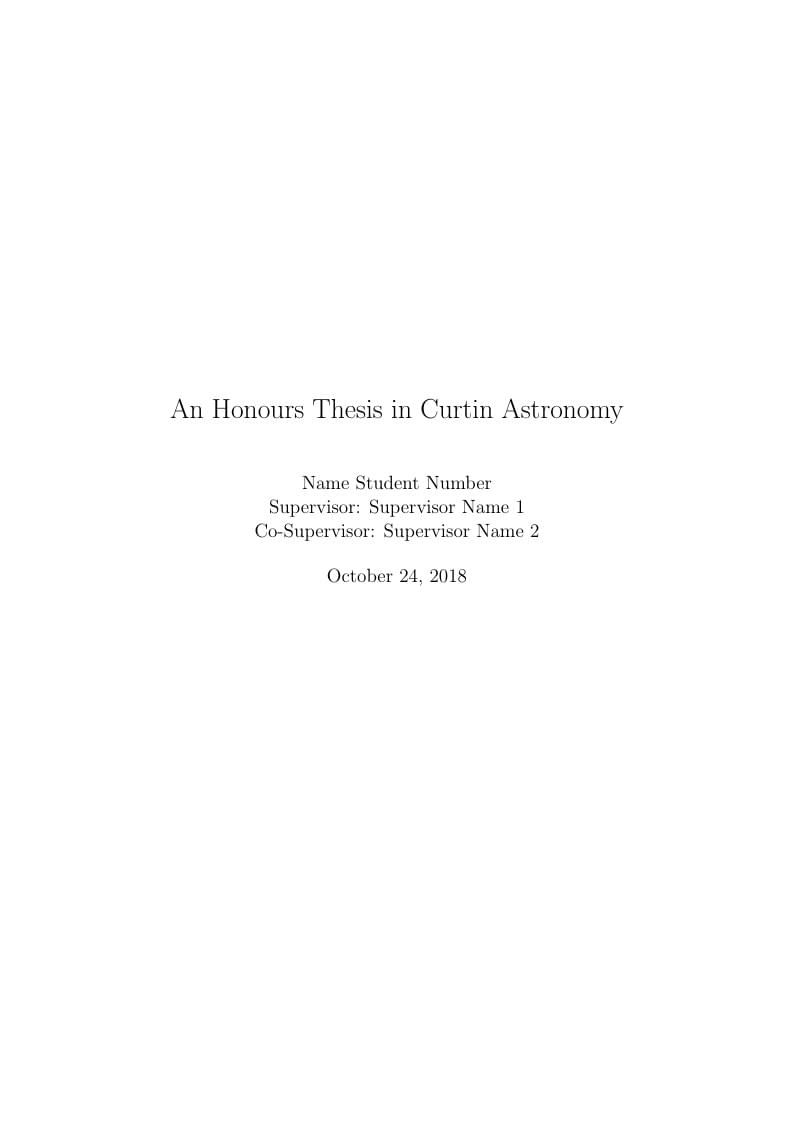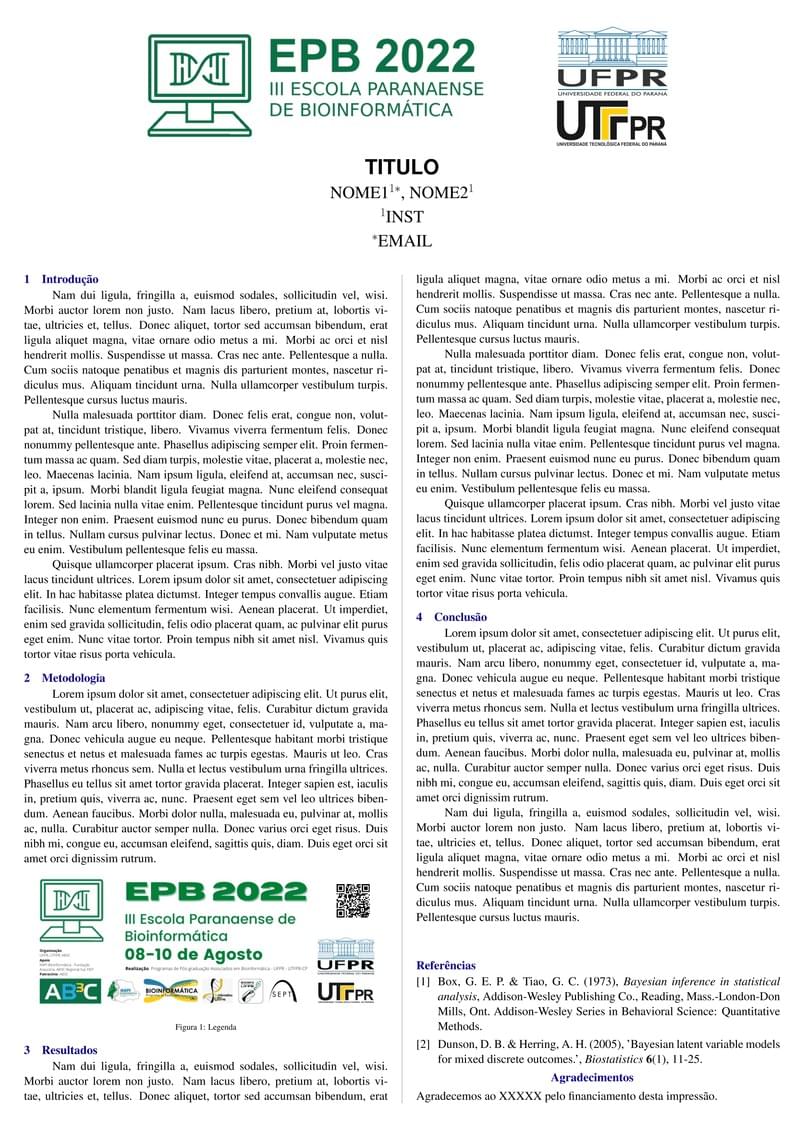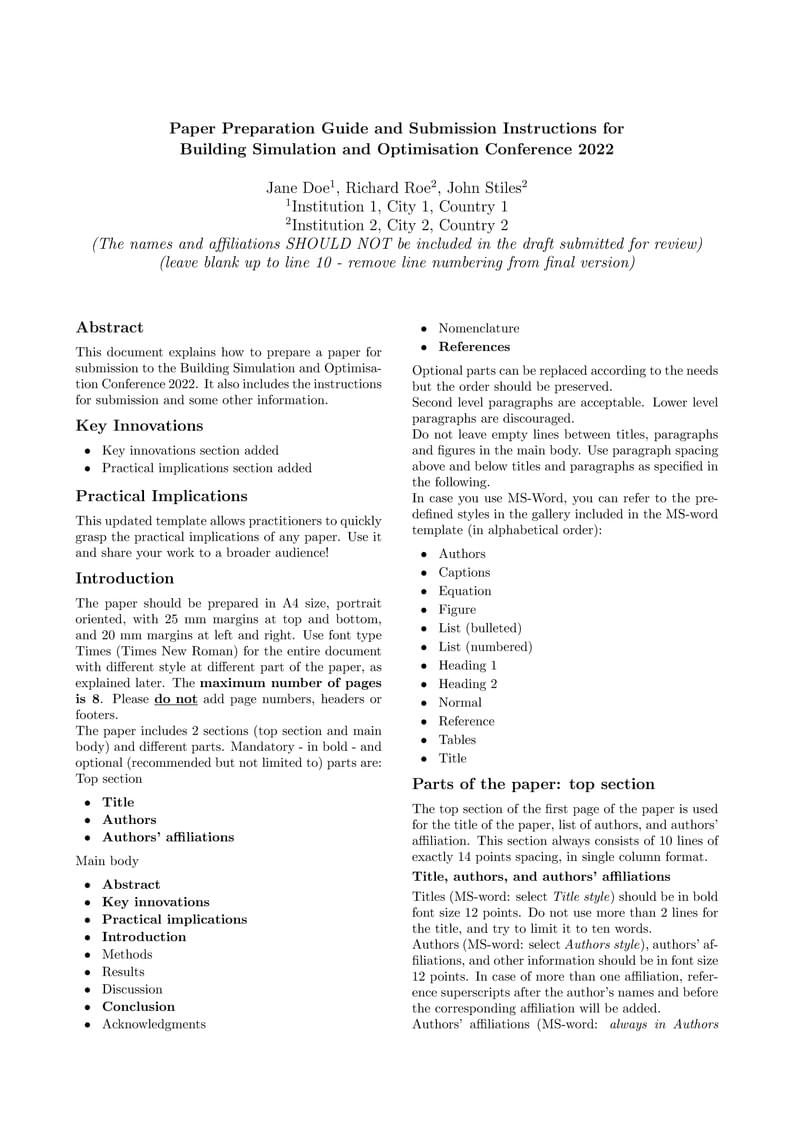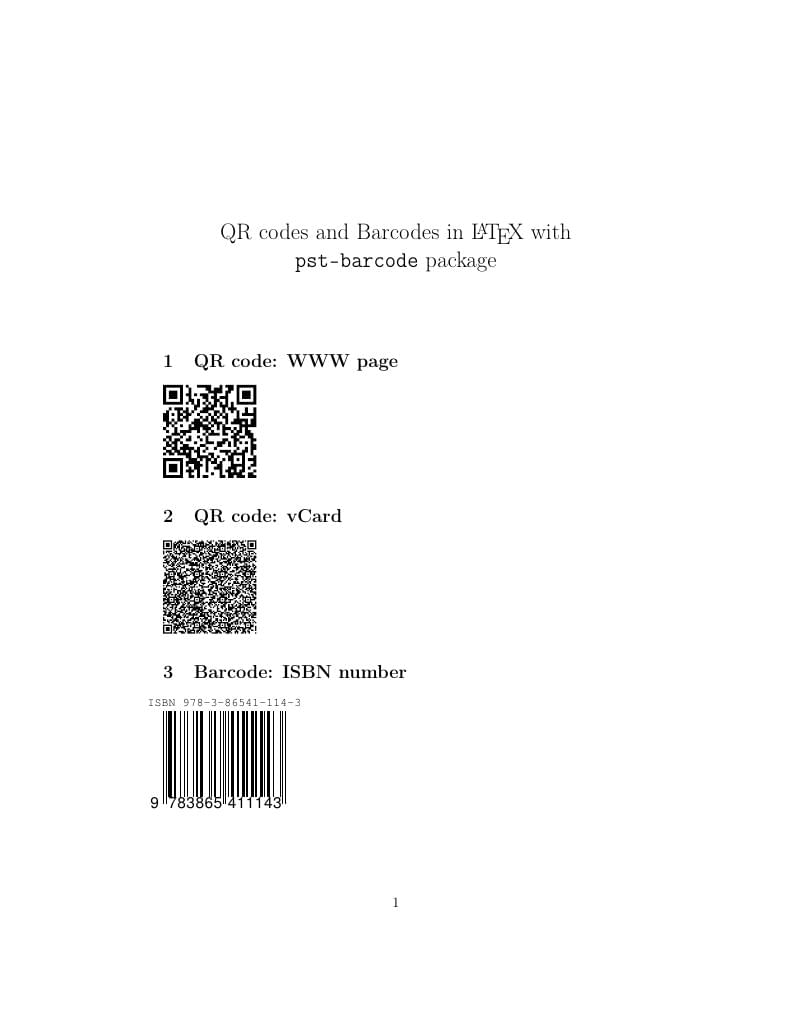overleaf template galleryLaTeX templates and examples — Recent
Discover LaTeX templates and examples to help with everything from writing a journal article to using a specific LaTeX package.

This is template thesis structure for the Curtin University Honours dissertation in radio astronomy.

Cute logic puzzle.

The mcode package configures the listings package to highlight MATLAB code in LaTeX. Inline, block and file listings are supported. This template includes a version of mcode.sty from the MATLAB file exchange, last updated 6 Mar 2014.

Template for poster presentation -Escola Paranaense de Bioinformática 2022 Link: https://www.even3.com.br/epbioinfo2022/

Paper Preparation Guide and Submission Instructions for Building Simulation and Optimisation Conference 2022

Please see comments in the preamble of the LaTeX document for attributions.

This example demonstrates generating QR codes and barcodes using the pst-barcode package. This example was originally published on ShareLaTeX and subsequently moved to Overleaf in October 2019.

A simple and short CV template for proposals Author: Martin Hoelzer Important note: This template needs to be compiled with XeLaTeX. The main document font is called Fontin and can be downloaded for free from here: http://www.exljbris.com/fontin.html

Multivariate analysis
\begin
Discover why over 20 million people worldwide trust Overleaf with their work.